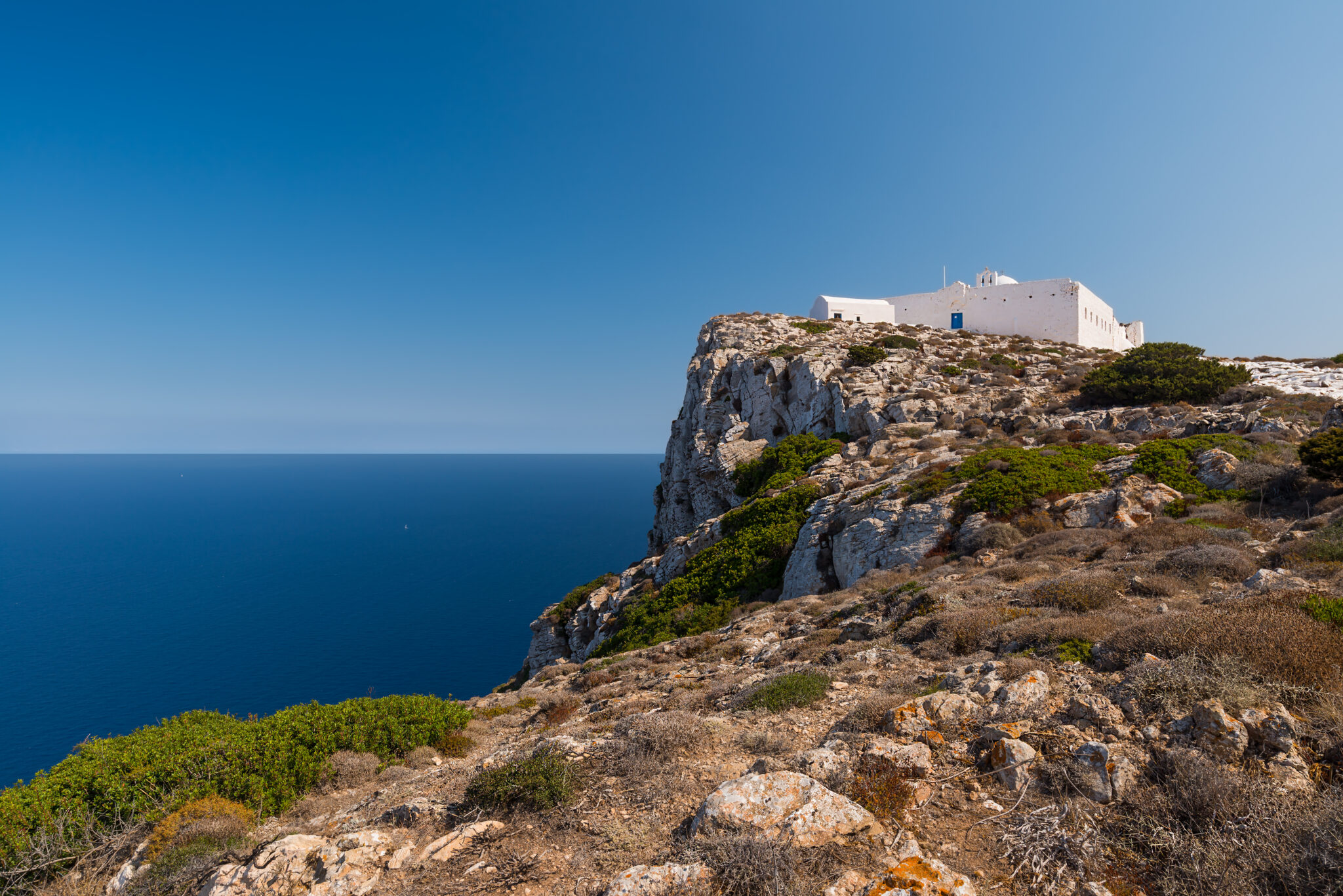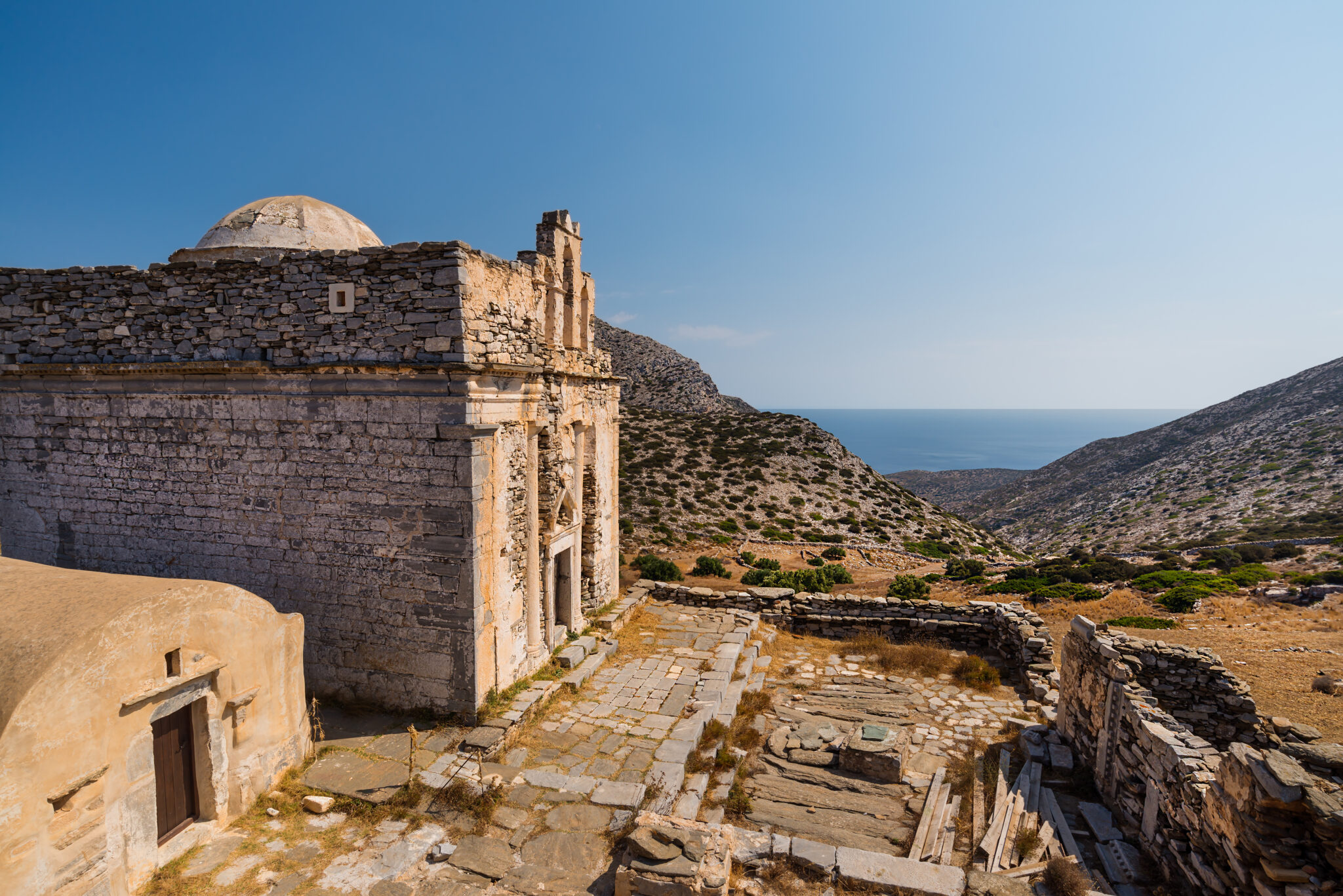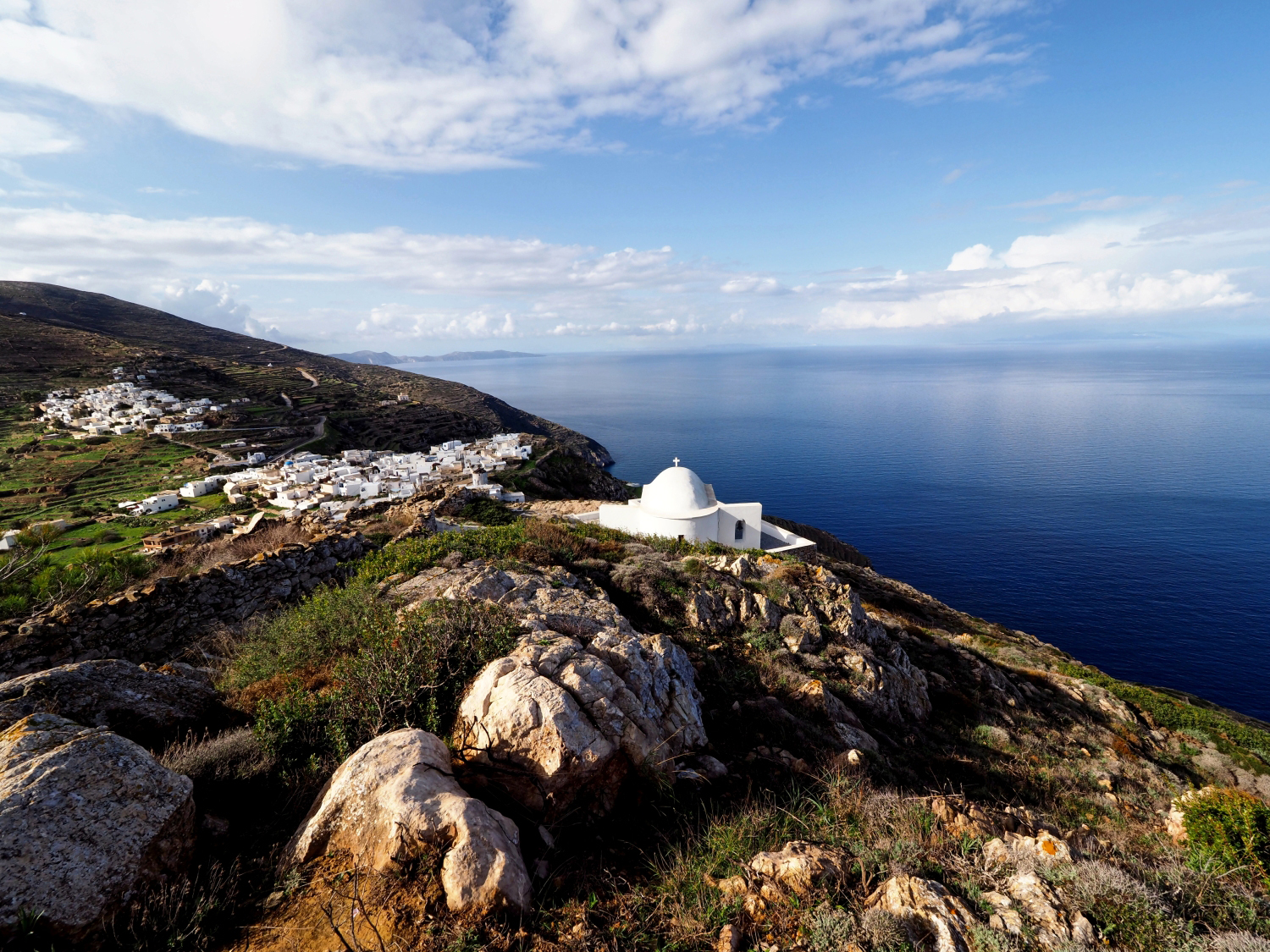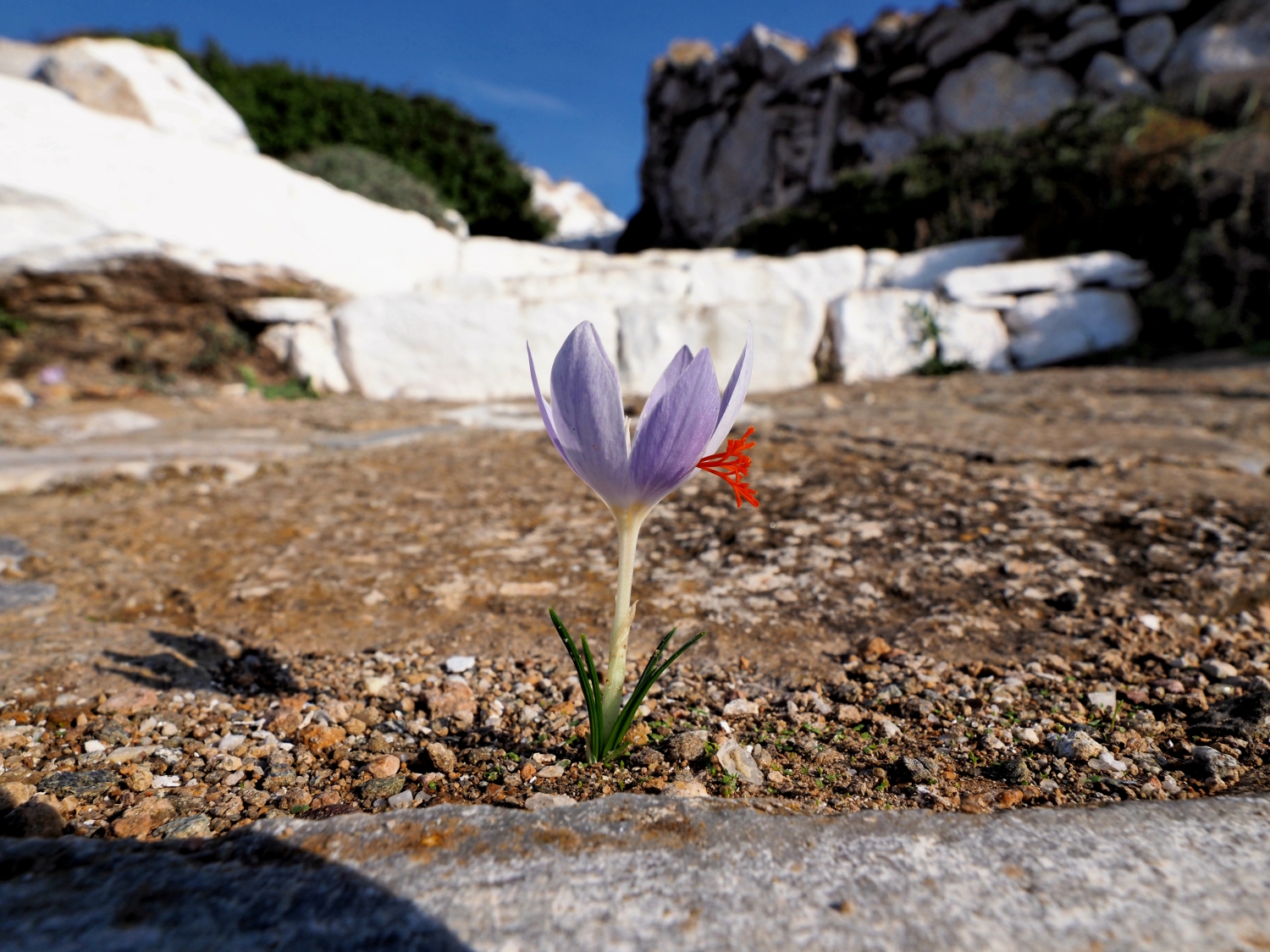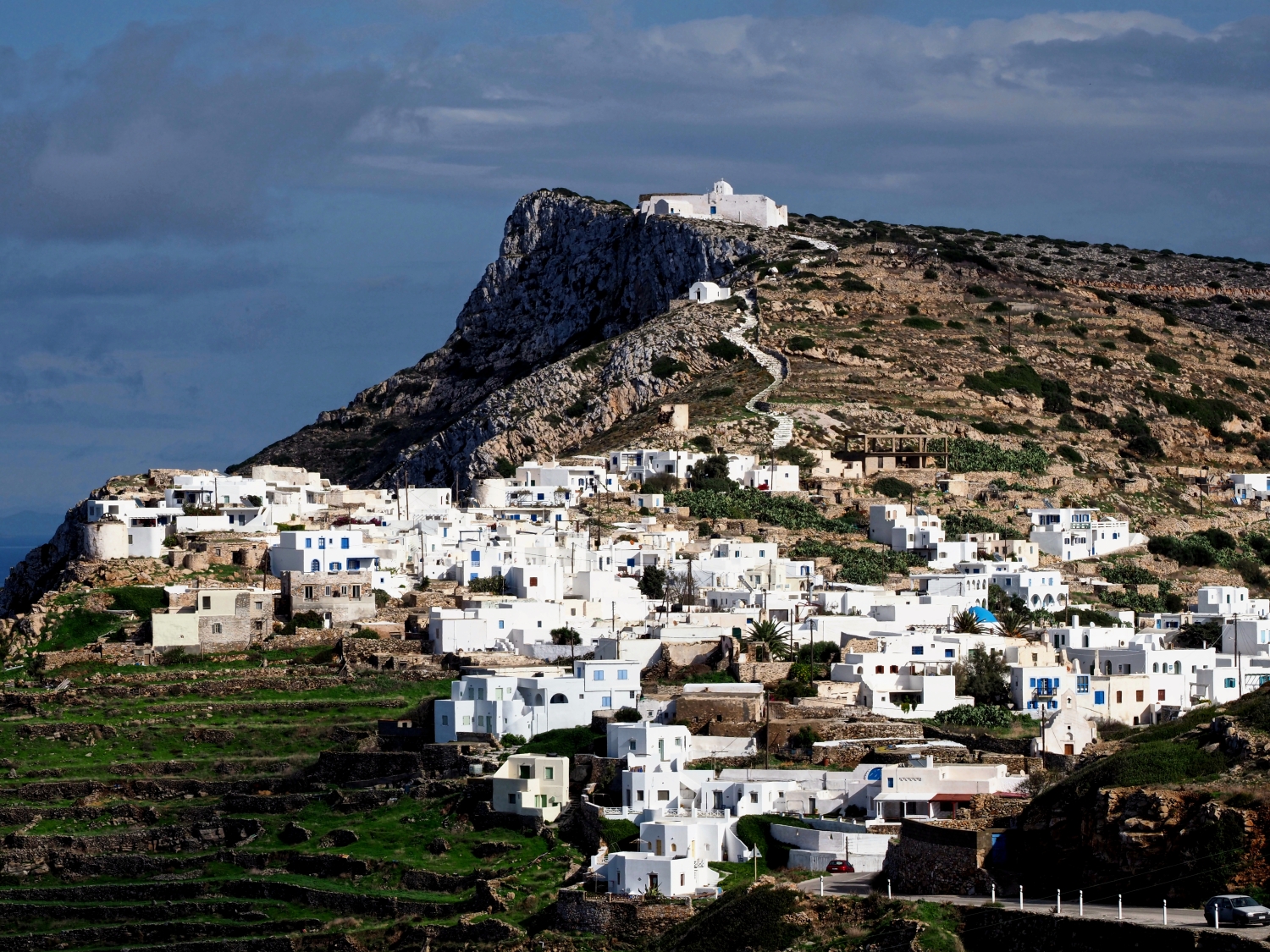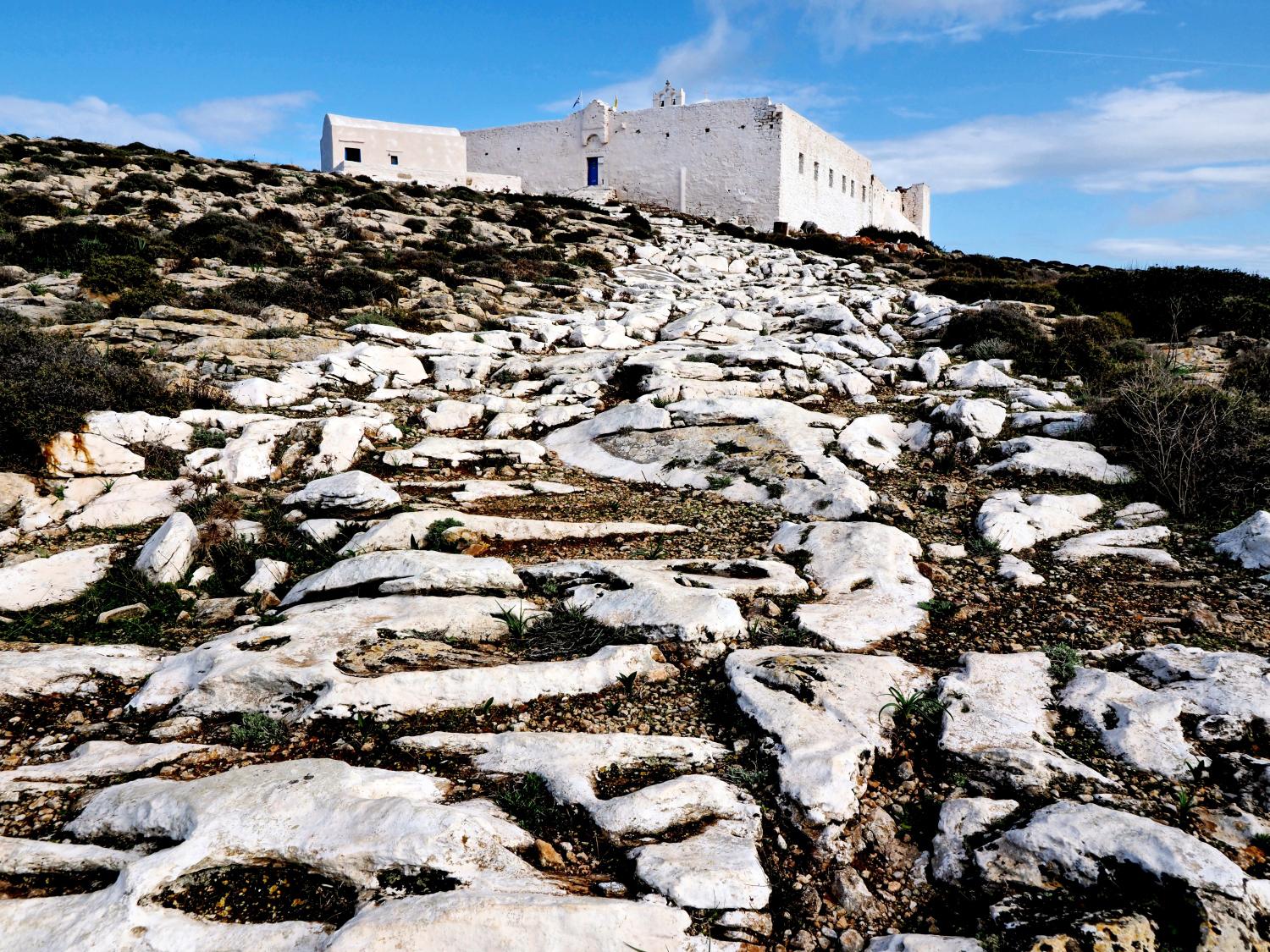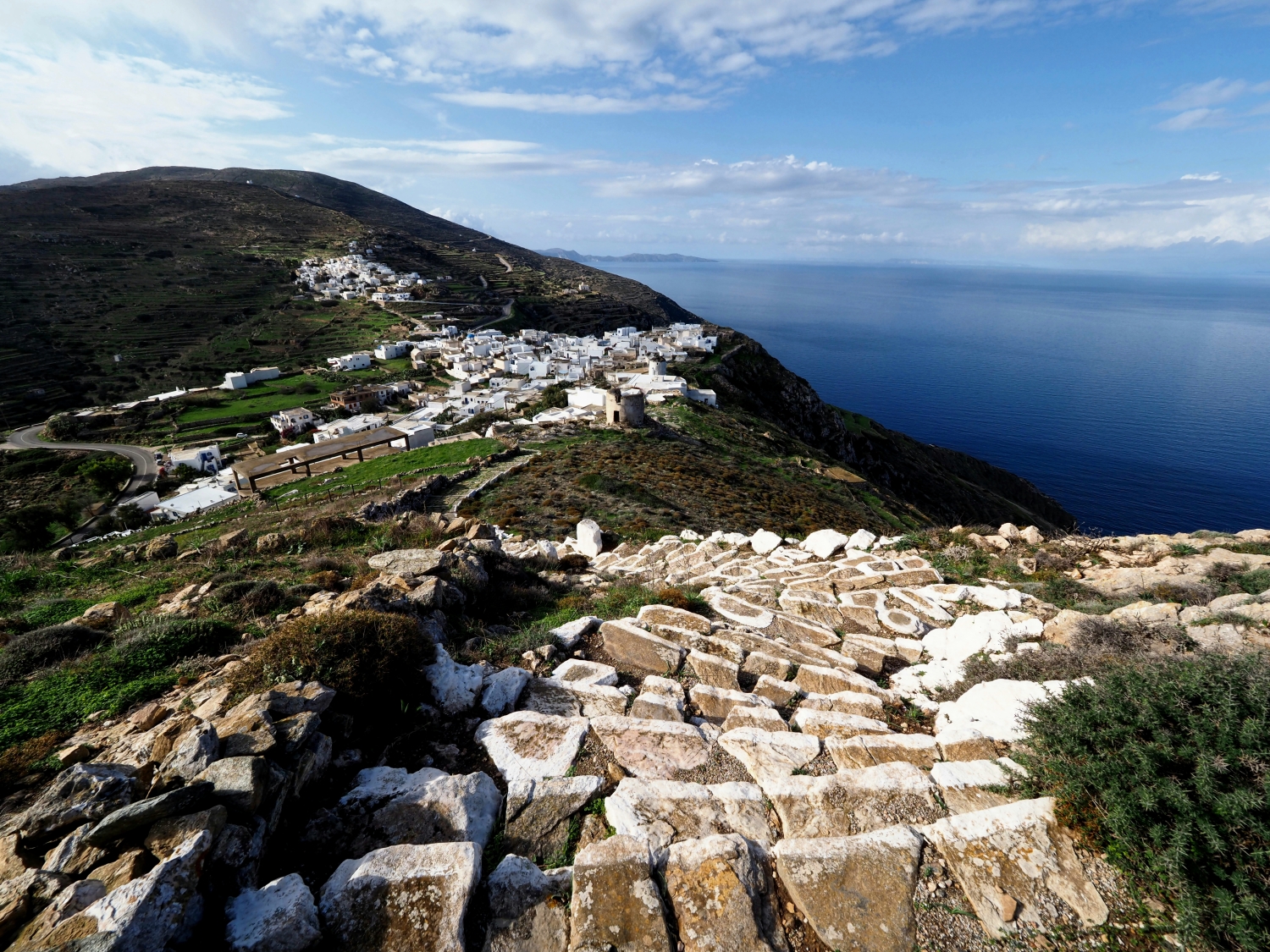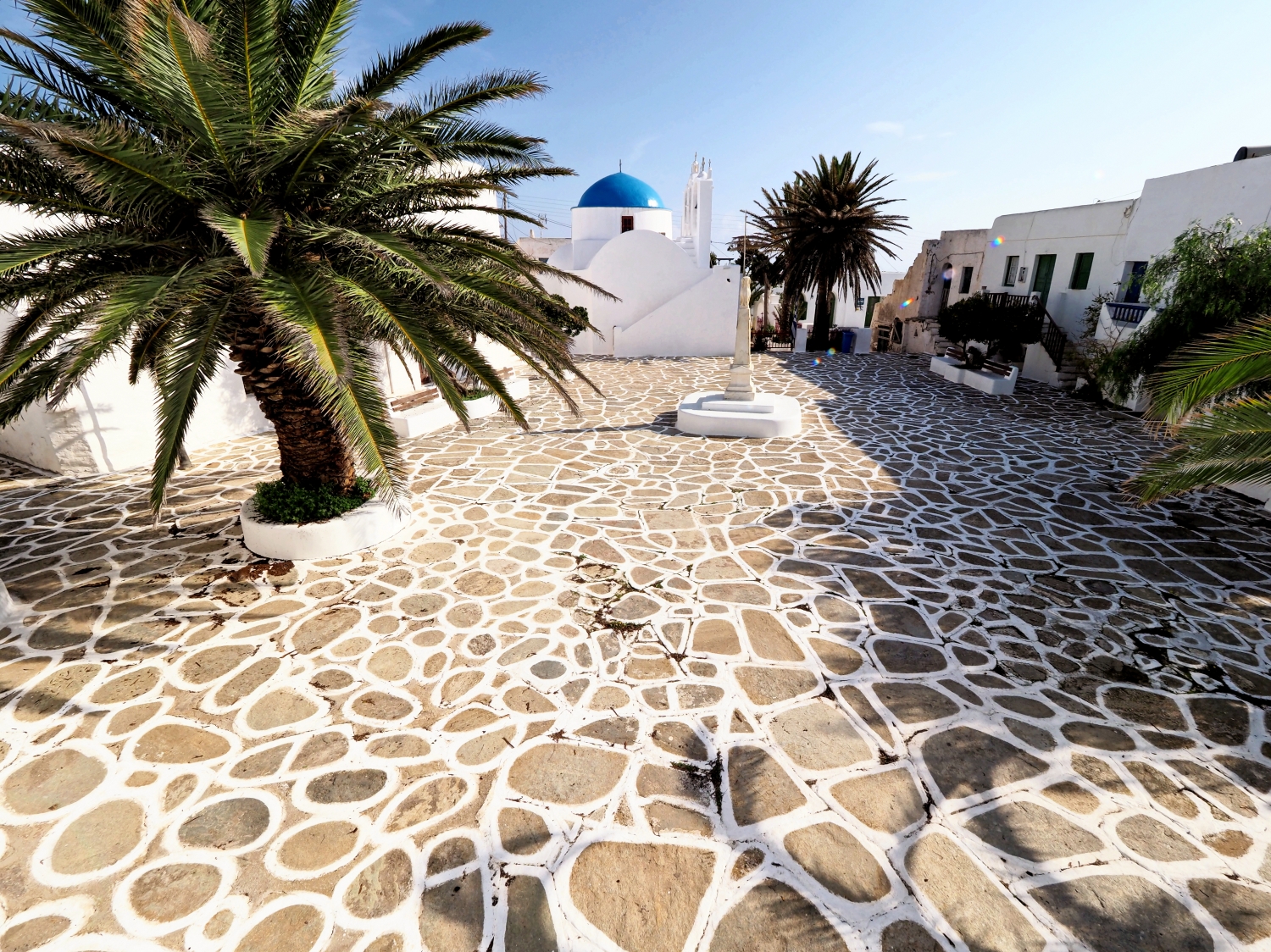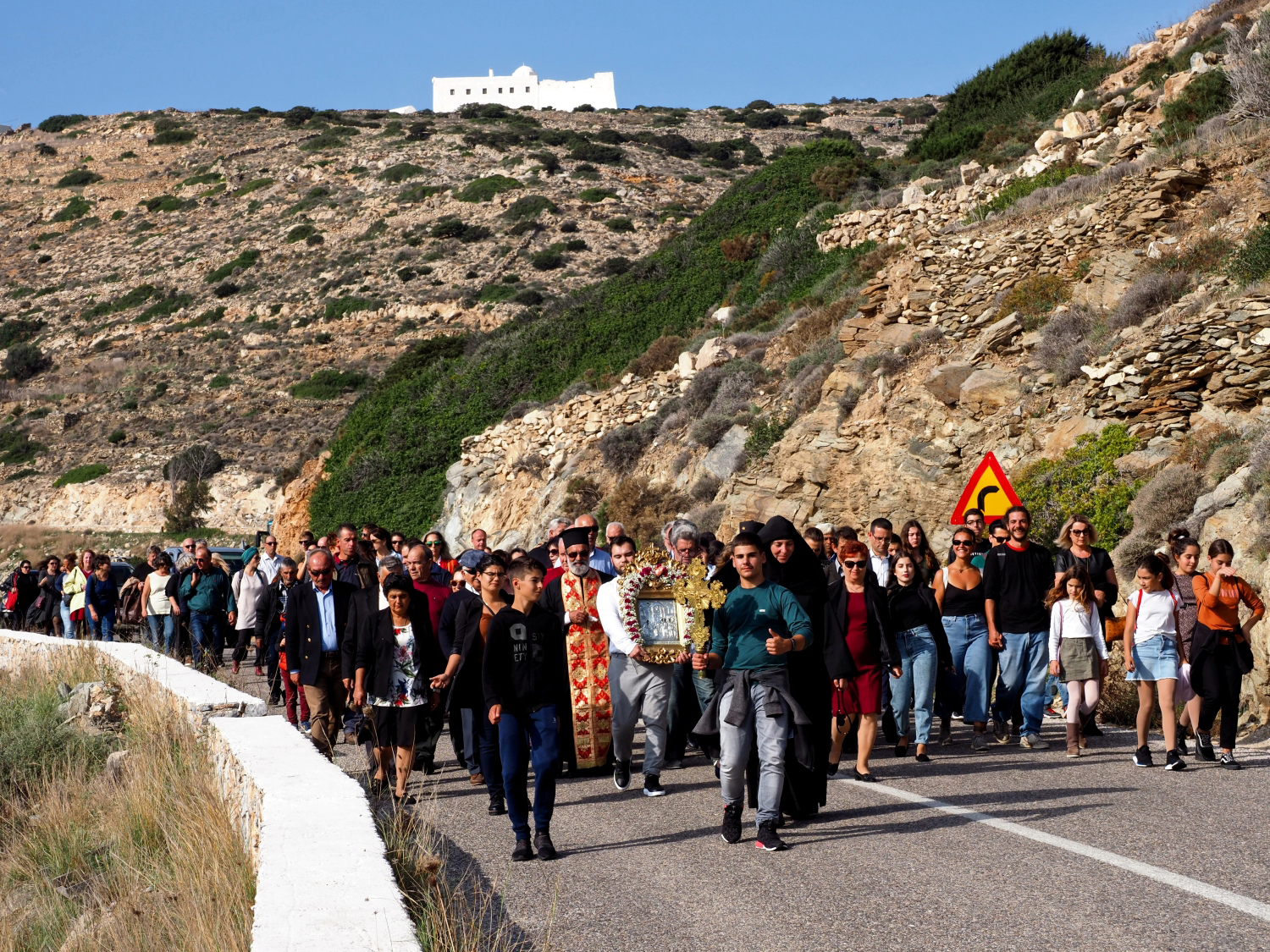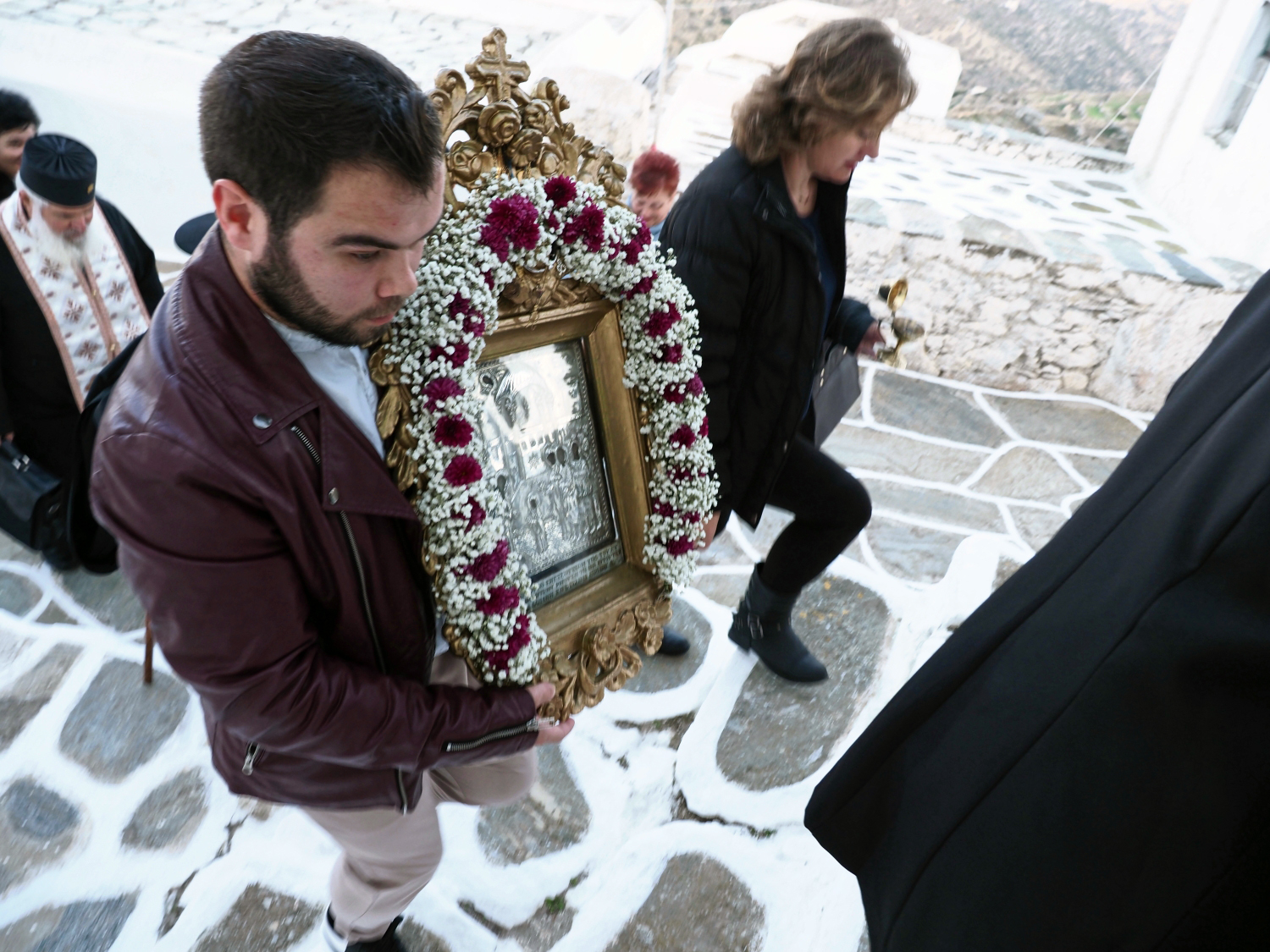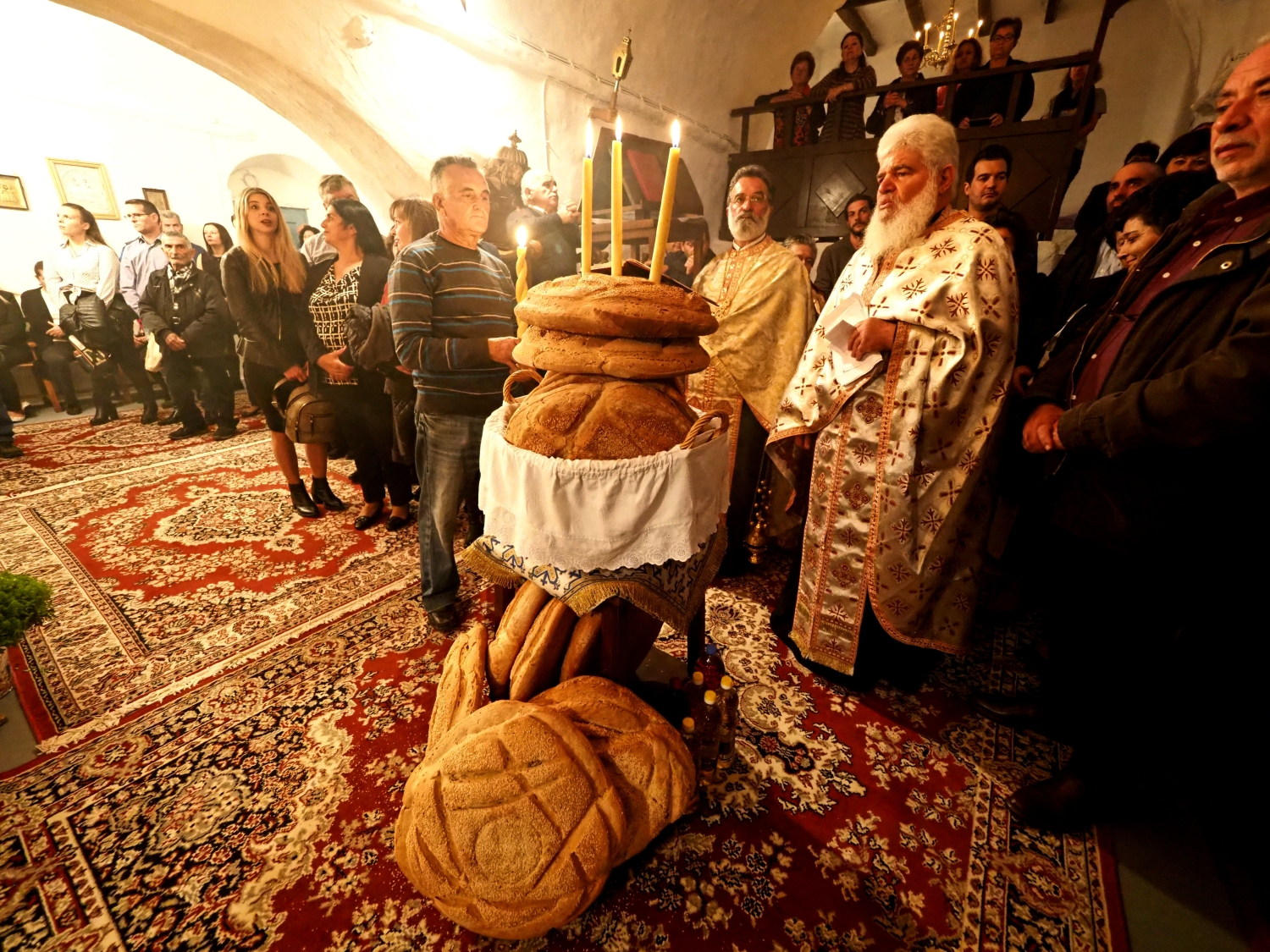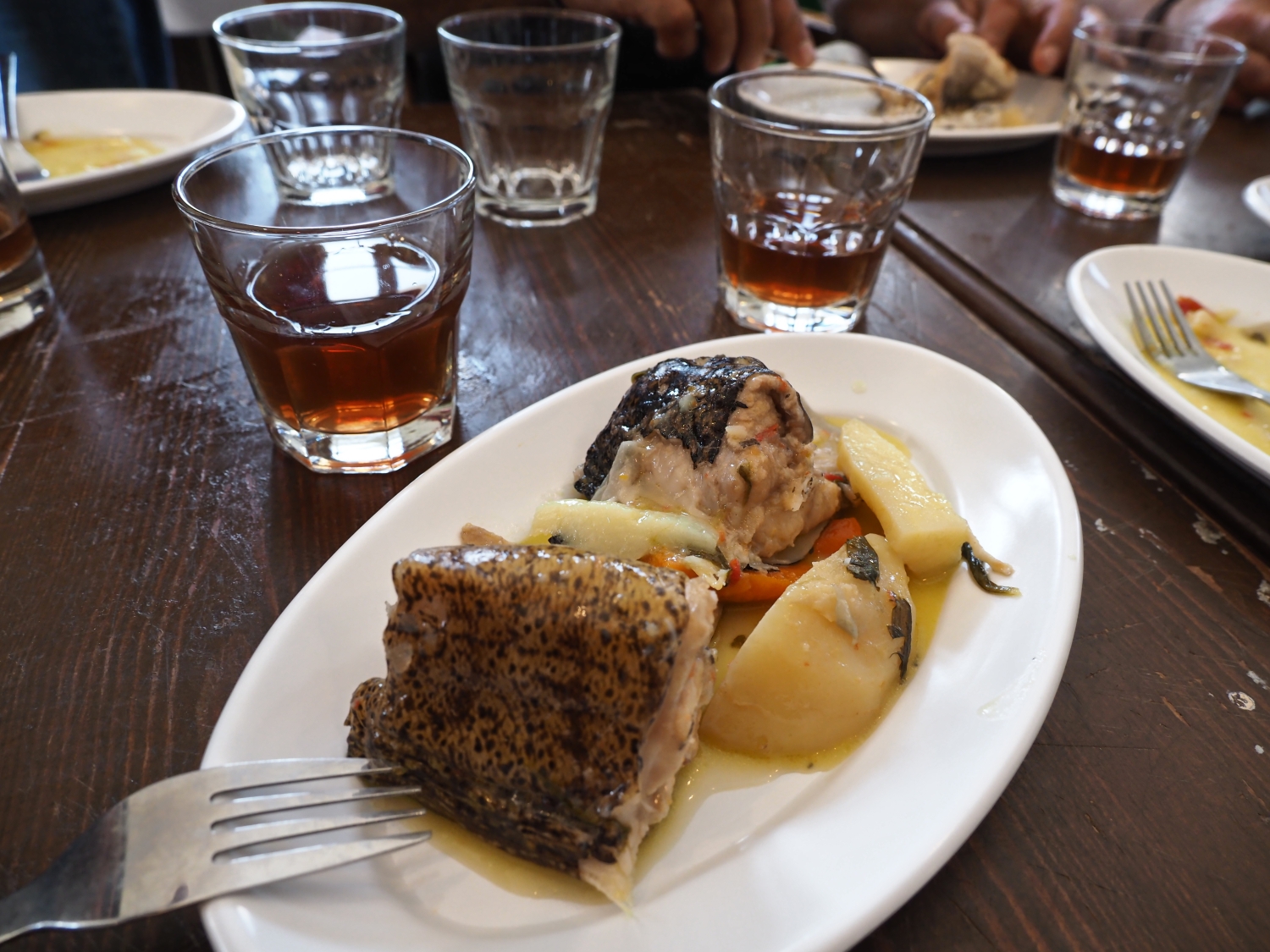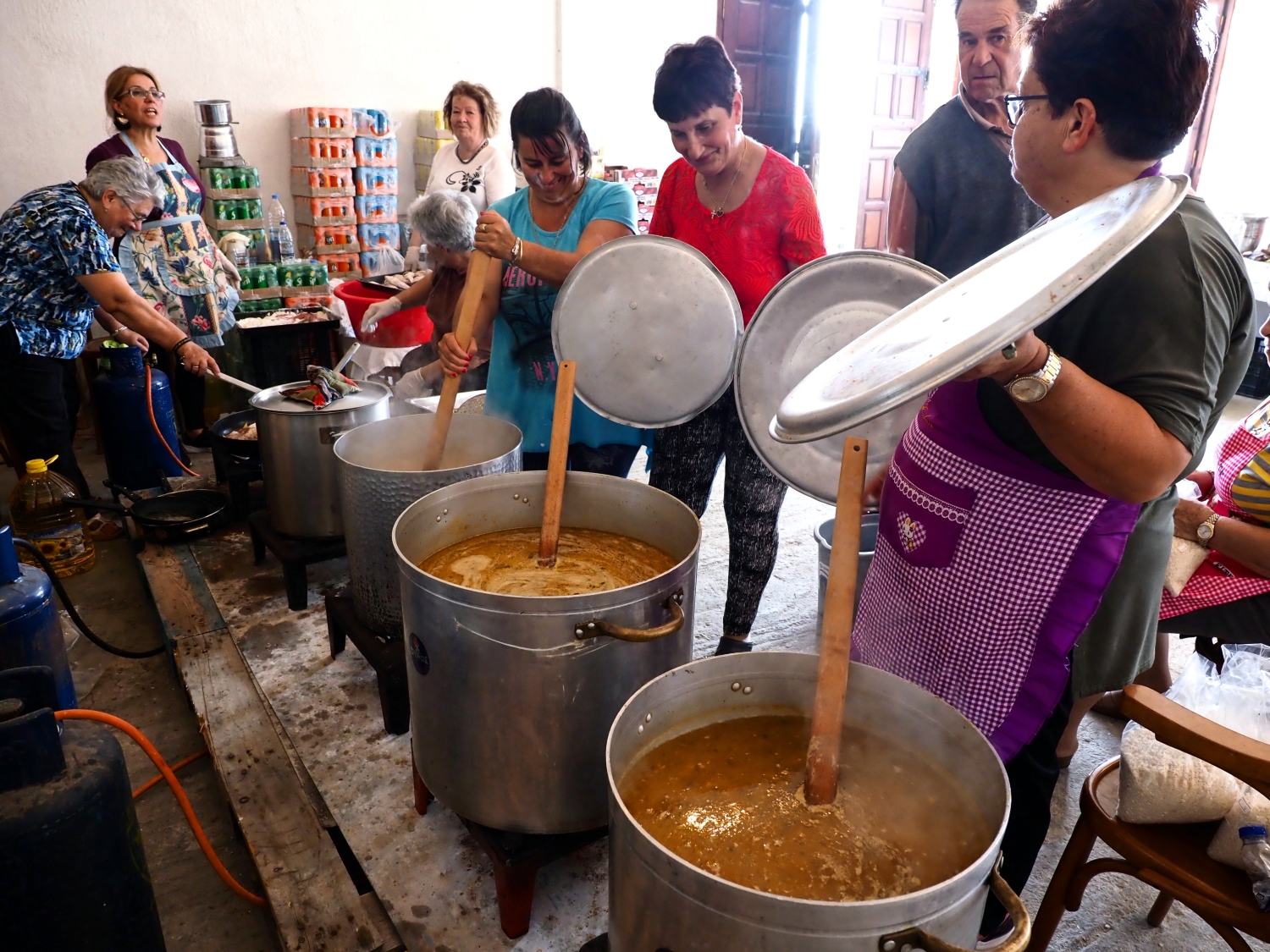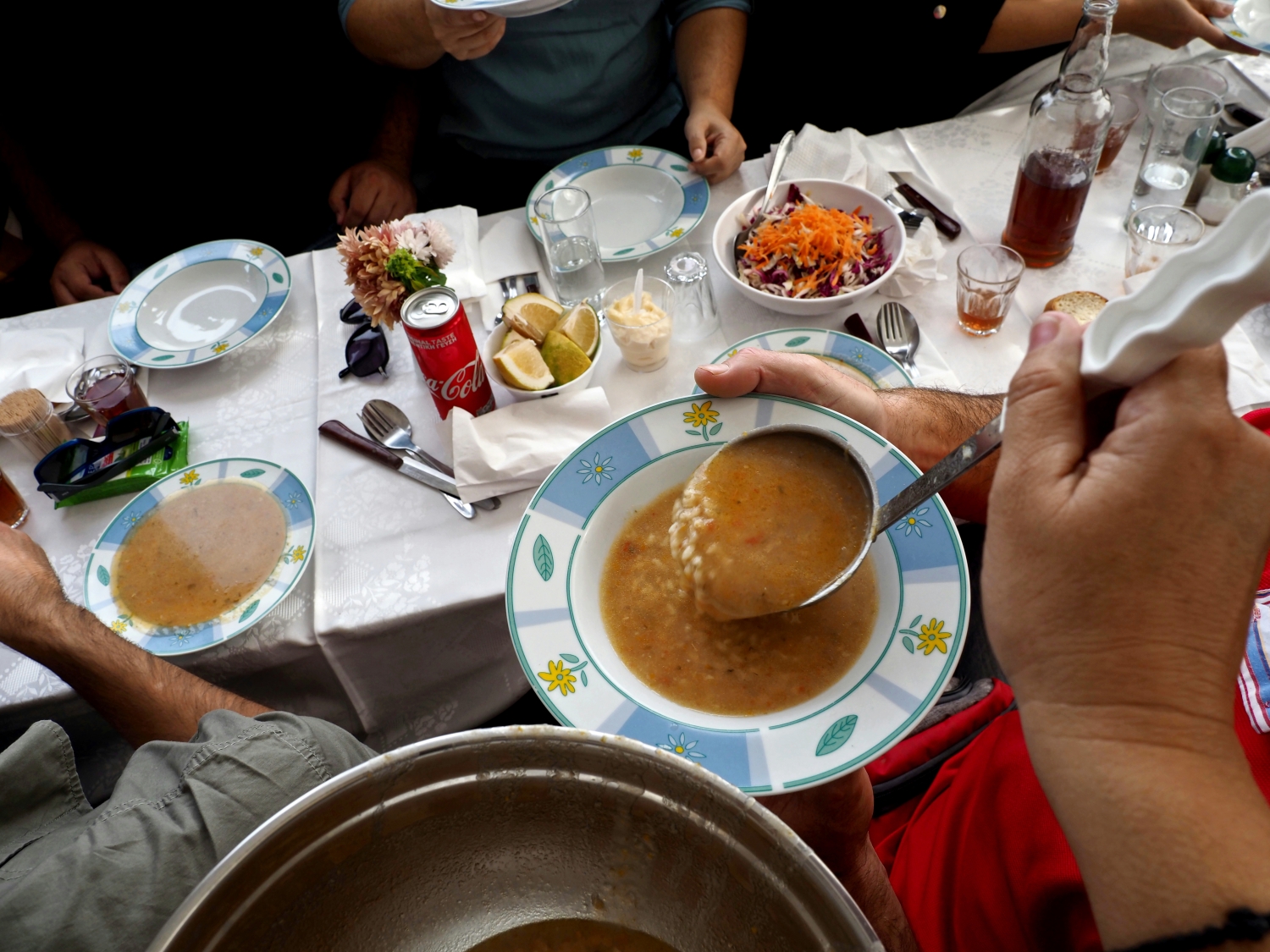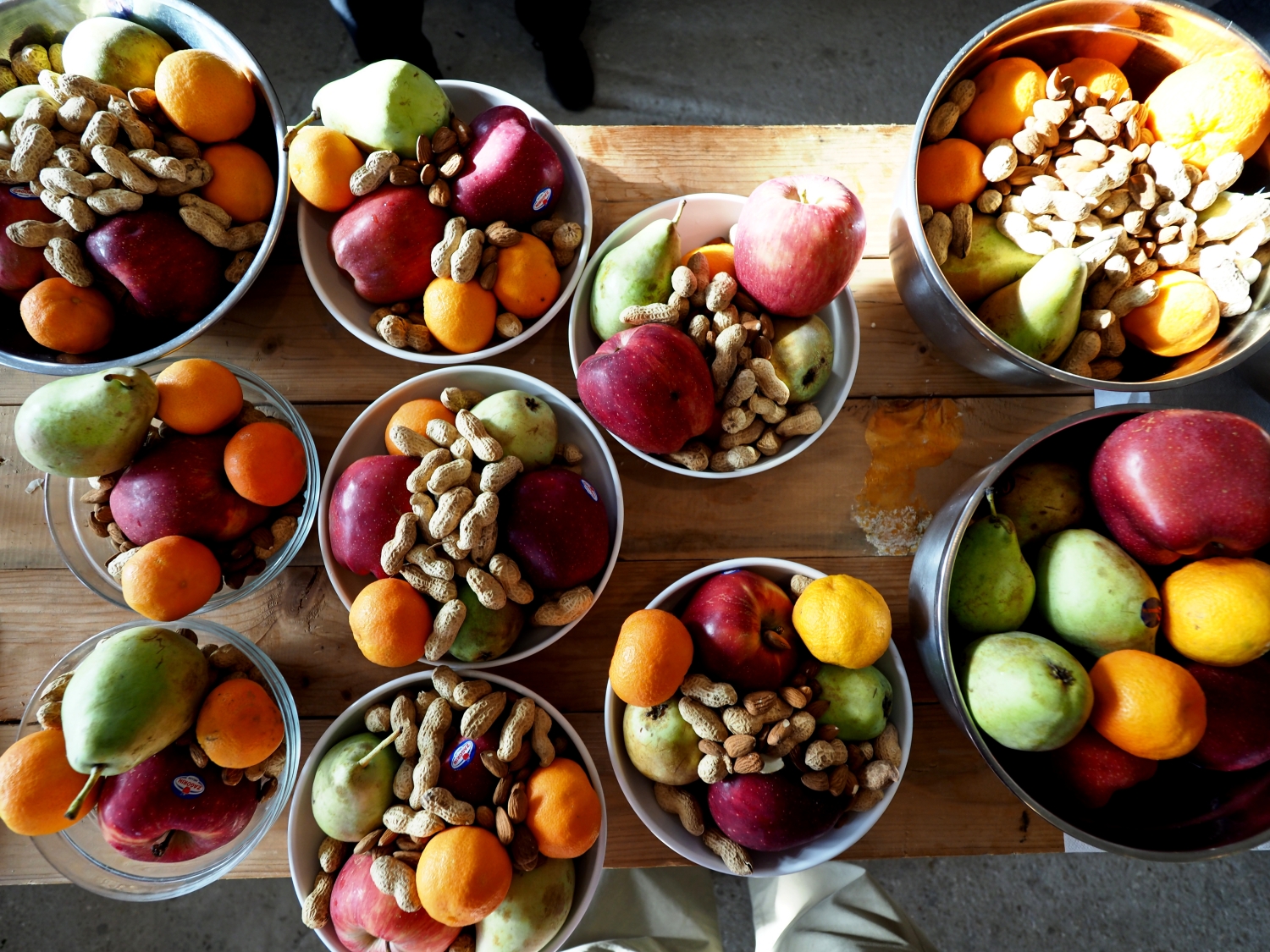There is the grand festival of the small worlds, a celebration of the inner life of the Aegean, honouring Panagia Pantohara, where the secrets of the Cyclades, hidden away in summer, are generously revealed in late autumn,early winter. There are no tourists on the island, just guests, partakers in the shared local rituals. It is now that it becomes clear that the Aegean Sea is not just the endless summons of the horizon, inviting you on a new adventure, but also the endless shelter of its ports, welcoming you back, gracefully sanctifying the journey and transforming it from aimless wanderings to nostalgic journeying. Welcome to the warmth of Alopronia, Sikinos’ safe harbour.
Indeed, the name of Sikinos‘ first harbour means exactly that, a refuge for sailors away from the hardships of the rough sea – Alos means sea, and pronia which means providence, care. Care and solace for the sometimes brutal torments of the sea. And as long as there are storms in life and waves in the sea, the port of Sikinos it would seem, remains this small, place of shelter, ready to welcome you, and soothe your soul in face of the great sea and the endless sky.
“In his absence, for thousands of years now, the Aegean has been saying again and again in the voice of its splashing along an endless length of coast: this is you!” Odysseas Elytis Nobel Prize-winning poet, 1911-1996 “Draft for an Introduction to the Aegean World” , from the collection “Carte Blanche, Selected Writings” (translated by David Connolly)
You study the setting for these rituals, counting and measuring, step by step, the white-washed path that leads you up to the glimmering hill-top chapel Ηrisopigi, and soon you feel as if you’re floating in the blue aura of sea and sky, over the bright whitewashed parishes of Hora – Kastro and Horio – all the way up to the fortified monastery at the top. And it feels like every step you put behind you, steps on which the occasional tiny crocus has managed to bloom despite the thick set cement, will follow you forever, wherever you go, ready to welcome you and let you rest on it.
“(…) and broad the sky above / so that you can read the infinite on your own” (Odysseas Elytis, “Axion Esti”, translated by Edmund Keeley and George Savidis). The poet follows you also, or rather, you follow him to the chapel of Panagia Pantohara the chapel that he dreamed of in the middle of your path: “This was built in the memory of Odysseas Elytis to honour Parthenos Sikinis”.
Now, the piety of Panagia acquaints you with the poet’s words and with the small and large artwork scrawled on the whitewashed pavement – summer clouds in the sky – little sailors’ courses in the sea:
“I am no painter, Kore Therasia. But I shall utter you with whitewash and sea. ” (Odysseas Elytis, “The Little Seafarer”, translated by Jeffrey Carson and Nikos Sarris) Poetry and craftwork.
“Apart from that, I frequent the place where every haze, even the smoke of my cigarette, is neutralized by the little sea that Panagia Pantohara keeps, for my sake, in her north-western cupboard.”
Odysseas Elytis, The garden of illusions.
The whitewashed path – a human gesture towards the divine sky – continues towards the monastery of Hrisopigi, and behind it, Hora’s two neighbourhoods, Kastro and Horio, appear clearer in their blinding whiteness. Each neighbourhood built around a church of Panagia – in essence the protector of the Aegean, with a church dedicated to her always in the centre or on top of every Cycladic Hora.
Panagia Hrisopigi, Panagia Pantohara, Pantanassa tou Kastrou, Theoskepasti tou Horiou, celebrating throughout the year, as the patron of the Island with her many timeless identities, shining bright in the always brilliant light of the Aegean, but Theoskepasti tou Horiou in particular, celebrates her festival on November 21, on the official day of the Presentation of the Blessed Virgin Mary.
Places of worship have always stood out in the landscape of Sikinos, like the majestic yet enigmatic Episkopi, in an area where the bucolic dry stone walls dominate. It was around the 2nd or 3rd century, when Neko and her secret were buried in Episkopi and a magnificent temple-like mausoleum was built on top of the grave. This was later turned into a Christian church with a dome, zealously keeping Neko‘s secret, that was only revealed a few summers ago, with the help of archaeologists. No matter how many mysteries come to light, the monument of Episkopi infuse visitors with mystic clarity, standing imposing, alone, in the bare wilderness of the Cycladic landscape.
Once upon a time, here in Episkopi, a great festival would have taken place, similar to the ones that still happen every now and then, all over the Aegean. The wine –the “blood” spreading cheerfulness to the festival’s entire body – would flow abundantly. Let’s not overlook, Sikinos, until as recently as the middle of the previous century, justified its ancient name, Oinoi ‘wine’ where according to the writings of Pliny the Elder (natural philosopher 24-79AD) and Stephanus of Byzantium (6th C author and geographer), was bestowed with a significant production of wine.
Returning from Episkopi, on the road along the vineyards, which have survived on terraces overlooking the sea, caressed by its iodine breeze; we bless our good fortune that this year, that we will be taking part in the festival of Theoskepasti, a local wine maker Costas“panigiras” has made his own, excellent, wine to offer to festival-goers.
Costas, the “panigiras”, kept the icon of the Virgin Mary safe in his home the previous year, obtaining its blessing, that he generously then shares with the community of Sikinos, honouring the Virgin Mary with a lavish festival on the day of celebration.
On the eve of the festival, we joined the procession that started from the house of the “panigiras” in Kastro, headed to the church of Eisodia tis Theotokou in Horio. The island people, coming together as family, congregated around the bread in the centre of the small church in a symbolic Eucharist, giving thanks for the daily bread, transcending the boundaries of a regular Vespers mass, showing the true essence of this community calling this small piece of land home.
The next day, at noon, everyone with deep roots in Sikinos, whether living on the island, or living far away, will come together to celebrate their shared identity with a feast, indicative of their character, seasoned with the island’s literal and symbolic spices, comprising of fish soup and local wine.
But now, after the Vespers, both the women and men, with a generously, share their time and their efforts to prepare the festive fare: They scale the fish, peel onions, potatoes, carrots, chop fresh tomatoes and celery, and squeeze lemons, preparing all the ingredients of tomorrow’s feast.
Among the cooks for the festival is Costas, the only fisherman of Sikinos, who gifted, among other things, ten Mediterranean morays, the key ingredient for a thick and rich fish soup. Their fatty flesh adds so much flavour, and despite appearing quite slimey, it’s renowned as an extremely tasty fish.
The cooks, however, insist on placing them separately from the other fish and by no means allowing these platters to be displayed on the feast table, with one exception, the dish prepared for father Thodoros, the priest, who made a special request. A typical example of a multi-talented islander –a priest, a chanter and singer with a fine voice, a melodious violinist, a beekeeper, and animal farmer.
And it’s a good thing not all of the festivalgoers appreciate them equally, because that meant we could eat our hearts full of the boiled morays kept in the kitchen, starting our nibbling early on together with Kostas, Petros, Giannis, Paraskevas, Giorgos, Nikos, while the fish soup was cooking.
In the busiest location of the festival, the kitchen, the women of the village work tirelessly, cooking from the early hours in the morning. The ladies Eugenia, Maria, Flora, Eleni, Nikoleta, Aggeliki, put the vegetables on the fire to boil and when they came to a boil, they added the fish, that they had rubbed with salt and lemon the previous night after scaling them. When the fish too had boiled, they strained them into large pans and selected the intact fish and vegetables, which they carefully placed on platters, in imaginative colour combinations, and ground the remaining bits to thicken the bouillabaisse.
Then they set about pouring the bouillabaisse in equal portions into the five cauldrons so that they would all taste the same, every so often tasting the soup and transferring some from one cauldron to another or correcting the taste with salt. When they achieved the necessary balance, they lowered the fire to keep the soup warm until the bell in the Hora rang, signalling that the procession with the Icon was on its way to the feast, meaning it was time for them to add in the rice. By the time the procession arrived, the soup would be ready to be served.
This was the only night that the icon of the Virgin Mary spends in the church of Eisodia tis Theotokou and not in someone’s home as is the custom. For the rest of the year, it is kept in the house of the person chosen by the community, who also makes the icon available for anyone who wants to see and pray with it during the year. The list of those wishing to serve the Lady of Sikinos is long and so the wait can last many years. The cycle of cohabitation with Her Icon begins and ends with the festival.
On the eve of the festival, November 20, the procession takes the Icon back up to Her church where it spends the night and the next day at noon, the procession brings it to festival banquet. This is all organised by the “panigiras”. The icon it is set on a specially designed pedestal, facing the tables on where the festival-goers are sitting, eating.
The steaming fish soup is now ready, properly seasoned and enlivened with zesty lemon juice. Poured from the large metal cauldrons into the tureens and from there to the bowls, while, in the meantime, the platters of fish and salads have been served, and the jugs of wine poured. At the end of the festivities the Icon is handed over to the new “panigiras” who carries it to his home, in procession, for the new cycle to begin that will too will end at the following year’s festival from when a new ‘Sikian’ will be honoured as the ‘panigiras’.
Nikos G. Mastropavlos is a journalist, creator of eudemonia.gr, a website dedicated to the culture of everyday pleasures in Greece and Cyprus.
Read also:
“Being an Islander” – An Island Identity – a Documentary Film on Sifnos
Amorgos: Immerse Yourself in an Authentic Cycladic Experience



